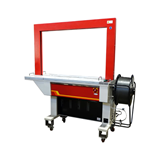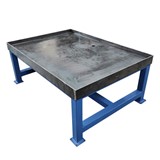Discover how on-demand manufacturing is transforming Australian industries. Explore market trends, ROI insights, and the latest equipment shaping this fast-growing sector.
Key takeaways
- On-demand manufacturing, powered by technologies like additive manufacturing, automation, and digital twins, is increasingly pivotal for agility, cost savings, and resilience in Australian manufacturing.
- While only ~6 % of GDP (and ~6–7 % of employment) comes from manufacturing, emerging sectors such as medtech, defence, clean energy, and customised manufacturing are ripe for on-demand models
- Australian manufacturers face steep energy costs, workforce skills shortages, supply chain disruptions, and fierce global competition, but government-backed programs (e.g., National Reconstruction Fund, Modern Manufacturing Strategy, Future Made in Australia) offer targeted support.
- For businesses, key considerations include digital/physical integration, compliance with green and security regulations, workforce capability, cost modelling, and securing accessible grant funding.
- Real-world examples, from Carbon Revolution’s lightweight parts to PT Blink’s rapid modular building, Cochlear’s advanced implants, and Omega Manufacturing’s automation journey, illustrate how on-demand models deliver both innovation and competitive positioning
Introduction
You’re navigating an era in which manufacturing is evolving, from mass, inventory-heavy production toward agile, hyper-responsive, on-demand models. In Australia, this shift aligns with a broader industrial transformation: manufacturing today contributes around 6 % of GDP and employs nearly 900,000 people. Amid rising energy costs, supply chain fragility, and global competition, your business must leverage on-demand capabilities to survive, and thrive.
Embracing the on-demand model: what it means for your operations
- Tech enablers: Additive manufacturing (3D printing), automation, robotics, IoT, AI-driven predictive maintenance, digital twins, and smart factories, these innovations shrink lead times and cut waste
- Operational flexibility: You can customise low-volume niche products while reducing inventory risk and responding rapidly to demand shifts, a vital advantage amid ongoing supply chain disruptions.
- Example in action: Carbon Revolution’s lightweight carbon-fibre wheels and Cochlear’s state-of-the-art hearing implants show how on-demand and advanced manufacturing support exports and innovation.
Mapping your decision-making journey
Assess readiness & define use-case
- Evaluate if on-demand suits your products, are they custom, low-volume, or subject to fluctuating demand?
- Consider prototyping, modular components, or industrialised processes as stepping stones.
Pilot with targeted technologies
- Start with additive manufacturing or collaborative robots (cobots) to refine capabilities and skillsets. For example, RSM guided Omega Manufacturing Group in Wodonga to integrate automation and vertical integration to strengthen efficiency.
Model costs and compliance
- Factor in Australian energy costs, skilled-labour premiums, and regulatory overheads versus offshore alternatives.
- Explore compliance mandates, green manufacturing, data security, AUKUS/defence, product standards, and assess working within frameworks like the Modern Manufacturing Strategy and Future Made in Australia.
Secure funding and incentives
- Tap into support via:
- National Reconstruction Fund (AU$15 b), targeting renewable energy, medtech, defence, agtech.
- Modern Manufacturing Strategy / Future Made in Australia, offering grants, tax incentives, and R&D support.
- ARENA and A$1 b solar panel fund, plus potential local low-carbon component hubs.
Build workforce and partnerships
- Bridging the skills gap is crucial, positions such as robotics engineers, data analysts, and CNC operators are in severe shortage.
- Leverage innovation precincts, academic-industry collaborations, and mentorship programs to upskill your team.
Scale with governance and resilience
- Expand on-demand production while embedding risk management for energy, transport, and supply chain volatility. Forecasting accuracy is essential: diversify suppliers and enhance visibility with digital tools.
Industries most impacted by on-demand manufacturing
On-demand manufacturing is transforming multiple sectors in Australia, especially where rapid customisation, lower inventory, and faster turnaround give a competitive edge.
Medical technology and healthcare
From customised prosthetics to patient-specific implants, medtech leaders like Cochlear use 3D printing and precision robotics to deliver tailored devices faster, improving patient outcomes and cutting lead times.
Defence and aerospace
Low-volume, high-complexity components make defence and aerospace ideal for on-demand. Localised production reduces reliance on overseas suppliers, a key strategic benefit under AUKUS and evolving defence needs.
Clean energy and renewables
Renewable infrastructure demands flexibility. On-demand manufacturing helps suppliers adapt to rapid design changes in solar, battery, and wind projects, supported by funding such as the $1b solar panel initiative.
Construction and modular building
Firms like PT Blink use off-site manufacturing to create large building modules for quick on-site assembly, reducing waste, speeding projects, and avoiding weather delays.
Automotive and transport
Specialist and aftermarket parts, such as Carbon Revolution’s carbon-fibre wheels, are produced efficiently in low runs, allowing quick adaptation to trends like EV growth.
Food and beverage processing
Customised machinery for cutting, packaging, or bottling can be produced on-demand to meet seasonal changes, new packaging formats, or updated food safety standards without major equipment overhauls.
Market outlook and adoption trends in Australia
You need to know why now matters, and the numbers say this is a critical moment:
- Australian manufacturing’s share of GDP has degraded to a record low of about 5.1 % in Q1 2025, down from 8.9 % two decades ago
- In the year to June 2024, over 5,100 manufacturers went under, driven by energy price shocks, skills shortages, and trade vulnerabilities, raising red flags about sector sustainability.
- Yet, amid the challenges, mid-sized manufacturers achieved average year-on-year sales growth of 6.7 % in 2023. This was largely powered by increased capital expenditure and tech adoption
- There are early signs of recovery: the Westpac-ACCI manufacturing sentiment index rose from 50.8 in March to 51.6 in June 2025, with future expectations jumping to 59.3, pointing to renewed optimism in the months ahead
- Meanwhile, major funding channels like the $15 b Future Made in Australia package, including solar, hydrogen, critical minerals, and innovation grants, are activating pathways to structural change.
Together, this paints a picture of a sector at a crossroads, under pressure, but with strategic supports enabling revitalisation. On-demand manufacturing’s flexibility aligns precisely with what Australia needs now.
Financial considerations and ROI modelling
Let’s get practical. You’re asking: how do I justify the investment?
- Start with three-way financial modelling, integrating the profit & loss, balance sheet, and cash flow statements, to forecast scenarios and support grant applications.
- Augment this with scenario analysis, model a conservative baseline and a growth-oriented on-demand model that factors in energy costs, labour, capital spend, and grant offsets.
- Example: investing $100,000 in production-scheduling software could deliver $30,000 in cost savings and $20,000 in revenue uplift, yielding a 50 % ROI.
- When modelling ROI, don’t focus solely on labour savings, include reduced inventory holding, lower waste, faster responsiveness, and improved customer satisfaction
- Leverage grants and incentives to shift the capex burden: the Future Made in Australia Innovation Fund, solar manufacturing grants, hydrogen tax incentives, and more can significantly improve your financial equation.
By combining financial precision with external funding, you make a compelling case for on-demand manufacturing, both internally and to stakeholders
Navigating challenges in Australia’s unique context
Energy and cost pressures
- Energy remains high and unpredictable; as examples in policy critiques show, inconsistent energy policy and cost spikes (e.g., gas prices) hurt operations.
- Offsetting this requires investments in energy-efficient equipment, onsite renewables, or hydrogen-power innovations, enabled by funding streams.
Skills gap and labour dynamics
- Despite overall manufacturing employment increasing modestly, talent supply isn’t keeping pace, vacancies are rising and some roles remain persistently unfilled.
- Upskilling through training programs, partnering with universities or TAFEs, and cross-industry hiring (e.g., digital, clean tech) can mitigate risks.
Supply chain fragility and competitors
- 60 %+ of manufacturers report material delays. On-demand manufacturing helps reduce dependency, but you must build local supplier networks and diversify logistics.
- You compete with lower-cost offshore producers, even as technology narrows gaps, tight cost modelling is vital.
Regulatory and geopolitical complexities
- Evolving standards for sustainability, defence procurement, and industrial subsidies mean you must stay agile. Programs like AUKUS-linked defence manufacturing and green energy incentives demand compliance and planning.
- The political landscape is shifting, expect further emphasis on local resilience and strategic manufacturing.
Real-world scenarios & case studies
- Omega Manufacturing Group: Transitioned to automation, vertical integration; leveraged RSM’s advisory services and R&D and grants to expand into US export markets.
- Carbon Revolution & Cochlear: Exemplars of high-quality, high-value on-demand outputs driving export growth and innovation.
- PT Blink modular builds: Manufactured large-scale building components off-site and assembled in record time, delivering speed, waste reduction, and productivity gains in construction
Action checklist for decision-makers
- Evaluate your product demand profile and determine whether an on-demand model is a good fit. Consider factors like customisation needs, production volumes, and market volatility.
- Pilot with targeted technologies such as 3D printing, collaborative robots, or digital twins. Start small to prove the return on investment before committing to large-scale change.
- Model your costs thoroughly, including energy prices, labour expenses, and compliance requirements, and compare these to the cost of offshore or traditional production methods.
- Explore funding opportunities through programs like the National Reconstruction Fund, Modern Manufacturing Strategy, Future Made in Australia, and ARENA solar initiatives.
- Grow your workforce by partnering with universities, TAFEs, and training organisations to build the skills you need, especially in advanced manufacturing, automation, and digital technology.
- Enhance supply chain resilience by diversifying your supplier base, building relationships with local vendors, and using predictive analytics to anticipate disruptions.
- Monitor and adapt by tracking ROI, scaling up successful pilot programs, and staying aligned with evolving policies, technologies, and market demands
Conclusion
On-demand manufacturing isn’t just a passing trend, it’s becoming a defining capability for competitive Australian businesses. The ability to produce exactly what’s needed, when it’s needed, allows you to respond to market shifts with speed, precision, and far less waste. For industries facing high energy costs, skills shortages, and supply chain uncertainty, this model offers a pathway to greater resilience and profitability.
The shift does require careful planning, assessing your readiness, investing in the right technology, building the right skills, and navigating the regulatory landscape, but the potential rewards are substantial. From faster turnaround times to unlocking new markets and reducing environmental impact, the benefits extend well beyond your factory floor.
As government support and advanced manufacturing hubs continue to grow, the opportunity to move from traditional production to an agile, on-demand model has never been more accessible. The businesses that start experimenting, learning, and adapting now will be the ones shaping Australia’s manufacturing future, while everyone else plays catch-up.


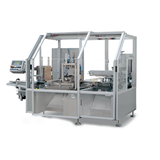
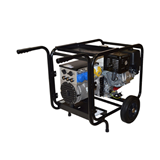
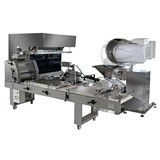
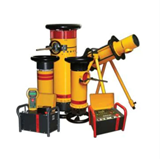
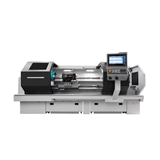

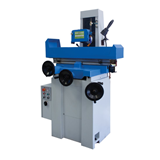
-160x160-state_article-rel-cat.png)
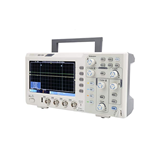
-160x160-state_article-rel-cat.png)


-160x160-state_article-rel-cat.png)
